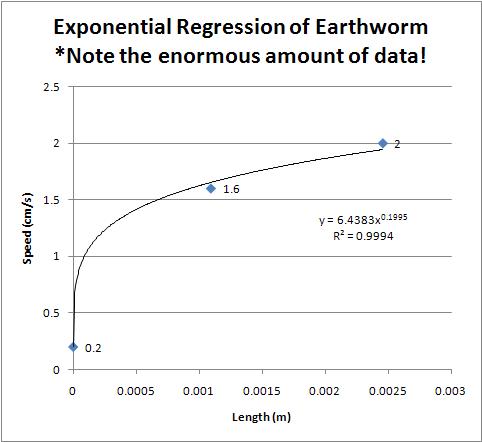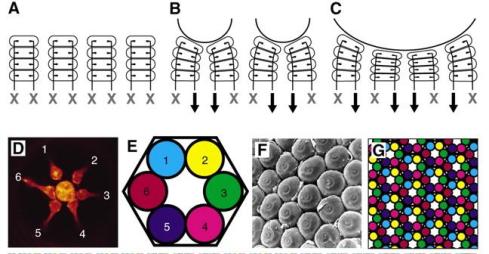
Some commendable attempts have been made to describe cryptozoological creatures in a highly technical manner. D&D’s Draconomicon, for instance, details things specific even as dragons’ eyelids, explaining that a variant nictitating membrane masks the innate glow of their eyes. Frank Herbert, esteemed author of first five Dune novels, had an eye for such detail when he brought Arrakis to life and populated it with fantastic creatures like the great sandworm. However, Herbert’s details are sometimes… well, some of them don’t make tons of sense.
A little background on sandworm biology will help to put things in context. Giant sandworms represent one part of a three-phrase life cycle including the minuscule sand plankton and water-whoring sandtrout. These creatures were introduced to the once watery planet Arrakis, and the extremely water-happy sandtrout exhausted Arrakis’s water supply until it transformed into a desert planet: hence the name “Dune”. Once a sufficiently dry climate is achieved, relatively small (by D&D standards) sandtrout are able to metamorphose into sandworms, which can reach upwards of 400 meters in length and up to 100 meters in diameter. Curiously, water is poisonous to the sandworms despite development from the watermongering sandtrout.

Nice units, guys.
Sandworms subsist chiefly on members of their own life cycle: sand plankton. Their excretions ultimately give rise to spice, or melange. Despite their size, sandworms are able to tunnel with great speed above and below the sand. Humans known as Fremen are able to ride the sandworms by drawing them to the surface of sand and then using hooks to expose delicate tissues underneath the sandworms’ ring segments. To avoid getting sand under their ring segments, the sandworms subsequently rotate so that a rider hooked on thus will be on top of its steed.
Here’s the thing: it doesn’t make a tremendous amount of sense for water to be poisonous to sandworms since they develop from water-filled, water-based organisms (sandtrout). Wouldn’t they continue to be water-based and end up poisonous to themselves?
Water’s a pretty essential component of life as we know it as well as most life in the Dune universe. However, it’s not the only possible liquid upon which life could be based; ammonia is another possibility given that it is polar, amphoteric, and reacts with itself to form its acid and base conjugates NH4+ and NH2–. These properties, especially acid base chemistry, enable ammonia to act as a solvent to various compounds; in fact, it dissolves organic compounds more effectively than water. Nevertheless, in terms of probability, water is a more likely to serve as life-giving fluid, so to speak; in mass fraction in parts per million, oxygen is the third most abundant element in the universe after hydrogen and helium. Nitrogen is fifth. Also, in order to justify water being poisonous to sandworms on the basis of ammonia or some other liquid serving as the universal-solvent-life-giving-whatever, the transition from sandtrout to sandworm would have to involve drastic biochemical changes that, honestly, would be hard to facilitate without a universal constructor.
Since the combustion of ammonia exothermically results in water and nitrogen oxide, the reverse process might… sort of… very faintly… possible… but… oh it’s just such a stretch, seriously folks. Replacement of all aqueous organic compounds with ammono-analogues would have to take place, something which could be done with enzymes (replacing OH groups with NH2, in large part), but replacing all water in the body with ammonia? Or maybe we’re to take things literally and assume that sand is the replacement universal solvent, introducing a new macrocosm of biological mechanisms. Ehh… fine. Let’s just go with it for now, while acknowledging water being poisonous to an organism that developed from what is literally referred to as a “living cistern” is pretty implausible.

Another eyebrow-raising detail of sandworm biology concerns their sand-swimming abilities. Recall that sandworms can grow in size to 400 meters in length and 100 meters in diameter. Now, think about sand. Anakin would eloquently say, “it’s coarse and rough and irritating and it gets everywhere”. But more to the point, you don’t sink into sand when idly sitting on it. Stick a finger into the sand, however, and it can be fully submerged. On the other hand, a pole far longer than your finger but equivalent in width requires greater force to submerge fully. Likewise, a stack of average-diameter plates as tall as your finger proves difficult to push into the sand. Now imagine a 100 meter wide sandworm face-planting into a desert. Does this seem a likely burrowing situation?
Thing is, sand isn’t water (this is one of many revolutionary insights conceived in the 21st century). Large objects can’t just dive in and out of it and do beach ball tricks. African elephants’ feet, in fact, are evolved specifically in accordance with this fact; their increased diameter (as compared to Asian elephants) reduces the degree to which elephants sink into sand while they’re lumbering about in the desert. So if you’re a fan of Shadow of the Colossus, now you know to do a skeptical Spock eyebrow in response to the 9th and 13th colossi (incidentally, both colossi happen to be totally awesome, just like sandworms; sand just makes things cool, even if plausibility vanishes. PS: was I the only one amused by how much easier it was to beat the 13th colossus in Hard Time Attack Mode versus Normal Time Attack? He had the same health but they increased the time you had to beat him. It was truly hellish beating that bugger on Normal Time Attack…). And don’t forget Skorpanok, though he’s a little more feasible in terms of sand-swimming given his size and relative surface area. He’s also a wiggler, like many desert-burrowing lizards and snakes, which could improve his ability to displace sand and travel within it… erm. Excuse me. Tangents. My sincerest apologies.

No.
Unlike Skorpanok, sandworms aren’t wigglers. So if we’re to permit the nonsensical notion that they can still “swim” through sand, some other mechanism must be at work. The most obvious choice would be something like setae, bristly projections that could latch onto grains of sand in mass sums and displace it, creating quicksand-like regions that might permit tunneling. Given the ridiculous size of sandworms, however, they still wouldn’t be getting anywhere very fast. Maybe, when submerged, they rapidly ingest sand and shoot it out their backsides to help propel themselves forward, but this doesn’t explain how they’re able to move quickly on top of sand.
Which brings us to another point of sandwormian implausibility: According to the Dune books, they can be goaded by Fremen into traveling up to 80.47 kmph (50 mph). The unitless ratio of a sandworm’s speed to its length is then 201.175. To put these numbers into perspective, let’s consider the sizes, environments, and velocities of real animals. The blue whale, which reaches up to 33 meters in length, can swim through water at 50 kmph (though only in short bursts). These values yield a speed-to-length ratio of 1515.152: greater speed relative to length as compared with the sandworm.
Admittedly, a length-to-speed ratio assumes an over-simplified model of organismal speed. Also, the comparison of a blue whale to a sandworm, while the best Earth has to offer in terms of creatures of enormous size, is inappropriate because whale travel through water, a far more permissive medium than sand. In addition, they use fluked, paddle-like flagellar means of propulsion as opposed to… whatever it is that propels sandworms through sand.
As such, let’s use a more apt model like the earthworm (regular old American earthworms, not the blue monstrosities found in Australia), which can tunnel through soil as well as inch across on dry surfaces–still not a great comparison, given that soil is generally moist, cohesive, and contains many more pockets of air than would the dry sand of Arrakis. Earthworms travel faster for increases in length, however; the relative increase in speed for every increase in length follows what looks like a square root curve (at least from 3 data points). This concerns worms of tiny proportions, just a few centimeters long. Extrapolating the effect a sandworm’s size would have on its speed (based on the graph below), a 400 meter-long sandworm should travel at 21.275617 (centimeters / second) = 0.765922212 kmph. Not exactly demon speeding. But more importantly, definitely not 80.47 kmph, as is declared in the Dune books.

Using the proportionality constant 0.02727 for mass-to-length yields the values 2.7272*(10^-10)m, 0.0010909m, and 0.00245455m for the worms' lengths in the graph above.
Oh, but we’re not done yet. Recall that Fremen use hooks to pry open the ring segments of sandworms as they hurtle on by at ridiculous, impossible velocities. By exposing delicate tissue underneath the ring segment, the sandworm rotates to avoid getting sand in the area. So, the sandworm, whose surface plates are tough enough to render them impervious to just about anything short of nuclear weaponry, is bested by a couple of ski poles wielded by puny humans. Furthermore, its ring segments are oddly susceptible to being pried open from the front even though sandworms tunnel forward through vast, rough, heavy volumes of sand. Adaptation-wise, wouldn’t the carapace be sheeted in such a way as to prevent objects traveling in opposite directions relative to the sandworms (like huge masses of sand) from invading their delicate underlayers? Of course, if they were sheeted in such a way, Fremen would have no way of harnessing them as vehicles, and the Dune story would take a bit of a hit… Oh well. Better to make dollars than sense.










